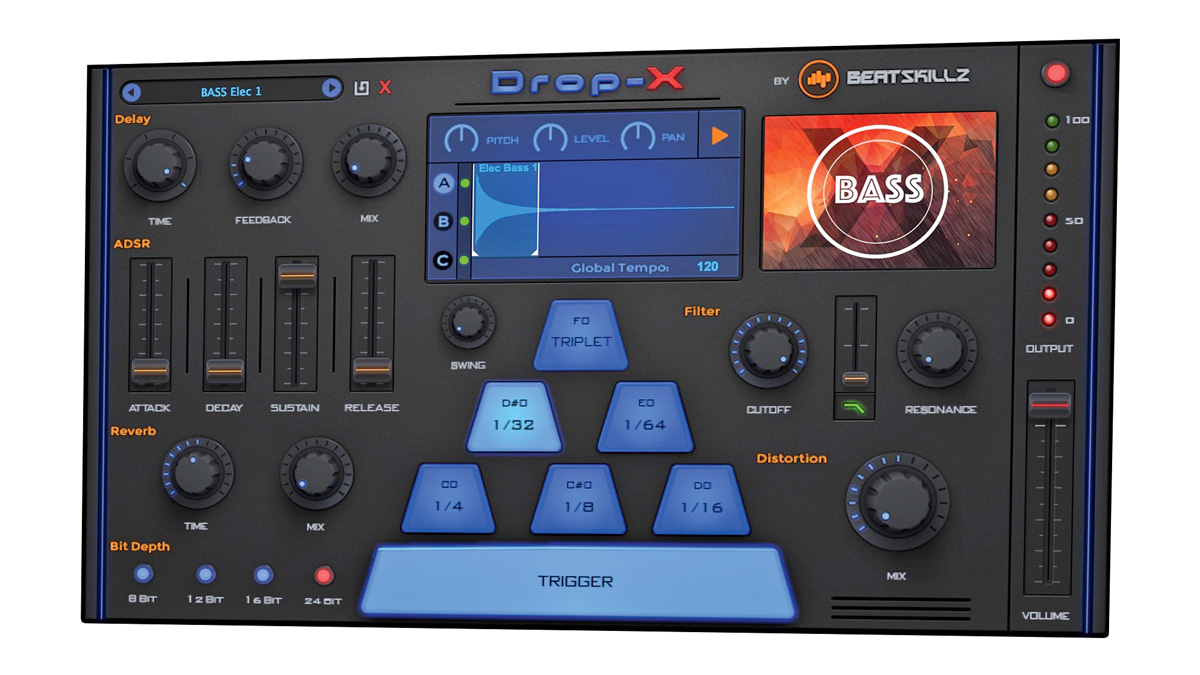MusicRadar Verdict
DropX is admirably simple in implementation and usage, making light work of repeats and stutter edits for any and all compositional purposes.
Pros
- +
Easy to use. Decent library.
Cons
- -
No filter routing. Confusing LED collar. Expensive.
MusicRadar's got your back
Described as a "drag and drop beat repeat sampler", DropX is designed to make triggering fills and stutters a truly effortless affair.
Drag up to three layered samples into it to have them automatically mapped up the keyboard from C1, and use keyswitches C0-E0 to activate host- synced note repeat timings from quarter-notes to 64th-notes, with F0 toggling triplets on and off.
Simply hold down a key to trigger the loaded sample(s) repeatedly at the chosen rate, and adjust timings on the fly, with rhythmic offset dialled in via the Swing knob.
Each of the three samples in a preset can have its level, pitch and pan adjusted (and automated), along with playback start and end points, and can be reversed with a click. They can also be individually muted, of course.
The onboard effects processing options are straightforward enough. A multimode resonant filter offers high-pass, low-pass and band-pass options, and sounds pretty good, while reverb and stereo delay modules are on hand for ambience and echo, the former with Time and Mix controls, the latter synced times from 1/2 to 1/64, Feedback and Mix.
Then there's an ADSR amp envelope (no filter routing, sadly) for volume modulation, four choices of bit depth (8, 12, 16 and 24 - we'd prefer a continuous slider), and a 0-100% distortion Mix control with a mildly confusing bipolar LED collar that's presumably on the 'to-fix' list.
The whole thing is topped off with a reasonably capacious library of presets (the vast majority of which only use one sample layer) and the nifty ability to drag your own image files into the top right of the GUI, aiding with user-made preset identification.
The combination of sampler and repeater, and the MIDI-triggered note timings, are key to DropX's success, making it a genuine performance instrument; and the effects, limited though they are, are helpful.
The price is far too high, though, given that there are no editable effects parameters and no depth or tweakability to the repeat functionality beyond its sheer playability and that Swing knob.
Computer Music magazine is the world’s best selling publication dedicated solely to making great music with your Mac or PC computer. Each issue it brings its lucky readers the best in cutting-edge tutorials, need-to-know, expert software reviews and even all the tools you actually need to make great music today, courtesy of our legendary CM Plugin Suite.
“We were arguing a lot and we were miserable”: How Green Day exceeded expectations with their most ambitious song
"There’s plenty for us guitarists to learn – and ‘less is more’ is the overriding lesson": how to play like George Harrison on The Beatles' Abbey Road
“They didn’t like Prince’s bikini underwear”: Prince’s support sets for the The Rolling Stones in 1981 are remembered as disastrous, but guitarist Dez Dickerson says that the the crowd reaction wasn’t as bad as people think











